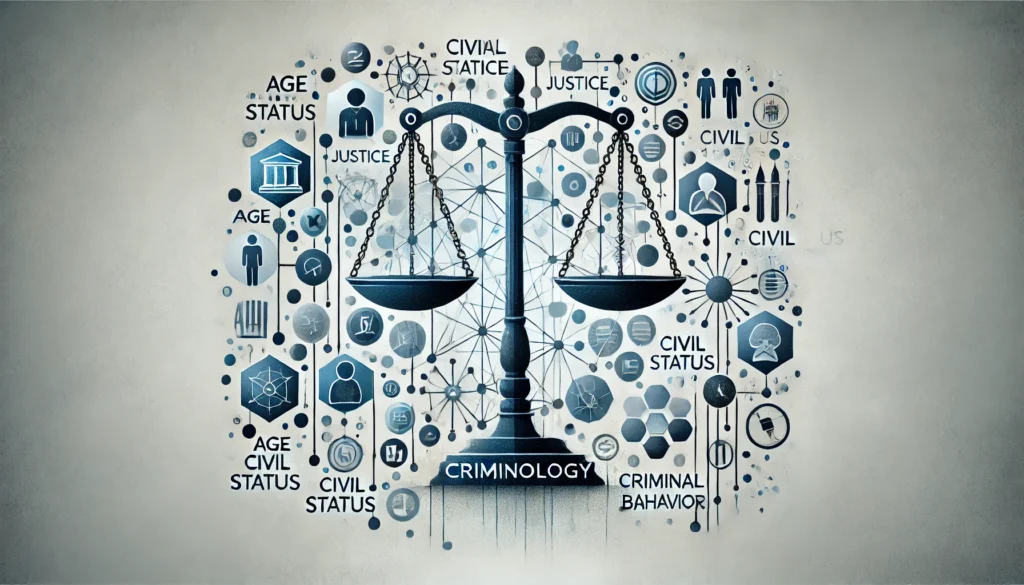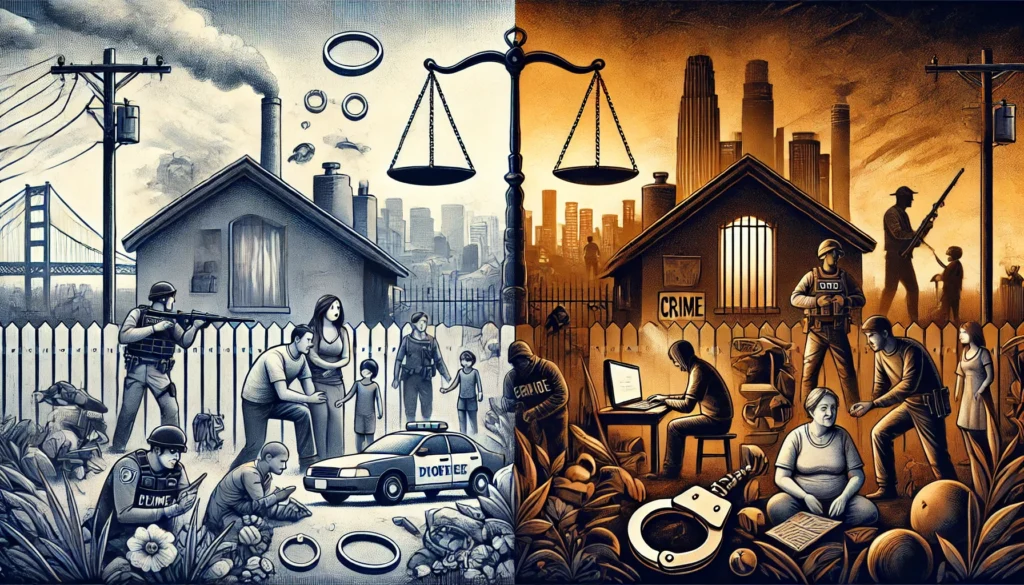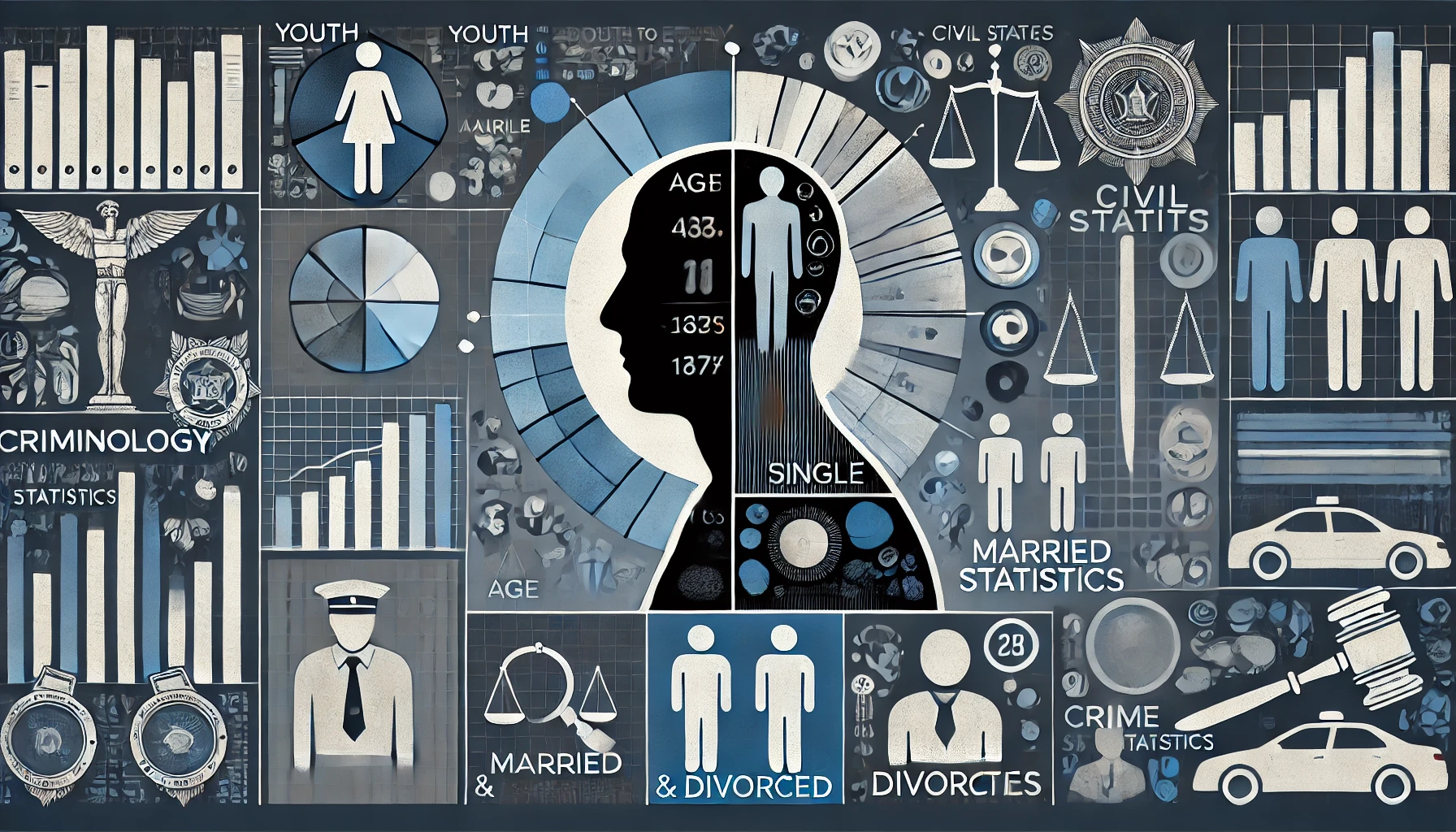Understanding the motivations and influences behind criminal behavior requires a comprehensive examination of various internal and external factors. Among these, the internal incidental factors such as age and civil status play a crucial role in shaping the patterns and types of crimes committed. These factors provide valuable insights into the psychological, social, and environmental dynamics that drive individuals toward unlawful activities. This article delves into how age and civil status influence criminal behavior, shedding light on their implications for criminological research and criminal justice policies.
Section One: The Role of Age in Criminal Behavior
1. Age as a Determining Factor in Criminal Patterns
Age is one of the most significant determinants of criminal behavior. Studies consistently show that certain age groups are more likely to engage in criminal activities than others. For example, adolescence and early adulthood are often characterized by heightened impulsivity, risk-taking behaviors, and susceptibility to peer influence, which can lead to criminal tendencies. As individuals age, their likelihood of engaging in crime typically decreases due to increased maturity, stability, and responsibilities.
2. Juvenile Delinquency
Juvenile delinquency refers to crimes committed by individuals under the age of 18. Adolescents are particularly vulnerable to engaging in criminal activities due to factors such as:
- Peer Pressure: The desire to fit in with a group often leads young individuals to participate in illegal activities.
- Socio-Economic Conditions: Poverty, lack of education, and unstable family environments contribute significantly to juvenile crimes.
- Lack of Supervision: Neglect or absence of parental guidance can result in adolescents seeking validation through deviant behaviors.
Common offenses among juveniles include theft, vandalism, and drug-related crimes. Interventions targeting this age group often focus on education, rehabilitation, and fostering positive community involvement to reduce recidivism rates.
3. Criminal Behavior in Adulthood
Adulthood brings new challenges and opportunities that influence criminal behavior. Unlike juveniles, adults often commit crimes for financial gain, revenge, or psychological gratification. Economic pressures, unemployment, and family responsibilities can lead some individuals to resort to illegal activities such as:
- Fraud and embezzlement
- Violent crimes like assault or domestic violence
- Drug trafficking and organized crime
4. The Age-Crime Curve
The age-crime curve is a well-documented phenomenon in criminology, illustrating that criminal activity peaks during adolescence and early adulthood, followed by a sharp decline in later years. This pattern highlights the influence of developmental stages on criminal tendencies. Factors contributing to this decline include:
- Increased self-control and emotional regulation
- Greater attachment to societal norms and values
- The deterrent effect of long-term consequences, such as imprisonment
Empirical studies have reinforced the reliability of the age-crime curve across different cultures and legal systems, making it a cornerstone in criminological research.

Section Two: The Influence of Civil Status on Criminal Behavior
1. Defining Civil Status
Civil status refers to an individual’s marital state, including categories such as single, married, divorced, or widowed. This demographic factor significantly influences one’s social interactions, emotional well-being, and, consequently, propensity toward criminal behavior. Understanding the correlation between civil status and crime provides nuanced perspectives on the social and psychological dynamics of offenders.
2. Single Individuals and Crime
Single individuals often display higher rates of criminal behavior compared to their married counterparts. Possible reasons include:
- Lack of Social Support: Being single might result in reduced emotional and financial stability, increasing vulnerability to criminal influences.
- Freedom and Risk-Taking: Single individuals may engage in riskier behaviors due to fewer familial obligations.
- Social Isolation: Loneliness and lack of meaningful connections can drive some individuals to commit crimes as a coping mechanism.
3. Married Individuals and Crime
Marriage has long been considered a stabilizing factor in reducing criminal behavior. This phenomenon is often referred to as the “marriage effect” in criminology. Married individuals are less likely to commit crimes due to:
- Increased Responsibilities: Marriage often brings familial duties that discourage risky behaviors.
- Social Bonds: Emotional and financial support from a spouse can reduce the stressors that lead to criminal activities.
- Community Standing: Married individuals may have a stronger sense of accountability and attachment to societal norms.
However, not all married individuals are immune to criminal behavior. Factors such as domestic abuse, financial struggles, and toxic relationships can lead to crimes within marital settings.
4. Divorced or Widowed Individuals and Crime
Divorce or the loss of a spouse can have profound psychological and social impacts, sometimes increasing the likelihood of criminal activity. These life changes often result in:
- Emotional Distress: Feelings of grief, anger, or rejection may push individuals toward illegal activities as a form of escape.
- Financial Strain: Divorce or widowhood often leads to economic difficulties, increasing the temptation to commit financially motivated crimes.
- Social Disruption: The loss of social support systems can result in isolation, fostering deviant behaviors.
5. Correlation Between Civil Status and Types of Crime
Different civil statuses influence the types of crimes committed. For instance:
- Single individuals are more likely to engage in crimes of opportunity, such as theft or substance abuse.
- Married individuals may commit domestic or white-collar crimes.
- Divorced or widowed individuals often resort to crimes linked to emotional distress, such as assault or fraud.
Statistical data supports these observations, emphasizing the importance of civil status as a variable in criminal behavior analysis.

Conclusion
Age and civil status are pivotal internal incidental factors that shape criminal behavior. The age-crime curve demonstrates the dynamic relationship between developmental stages and crime, while civil status underscores the social and emotional dimensions influencing unlawful activities. By examining these factors, criminologists and policymakers can develop targeted strategies for crime prevention, offender rehabilitation, and societal reintegration. Ultimately, a deeper understanding of these internal influences enhances the effectiveness of criminal justice interventions and promotes a safer, more inclusive society.

